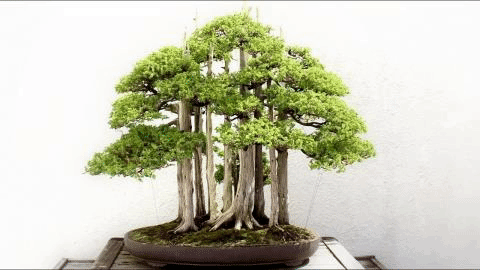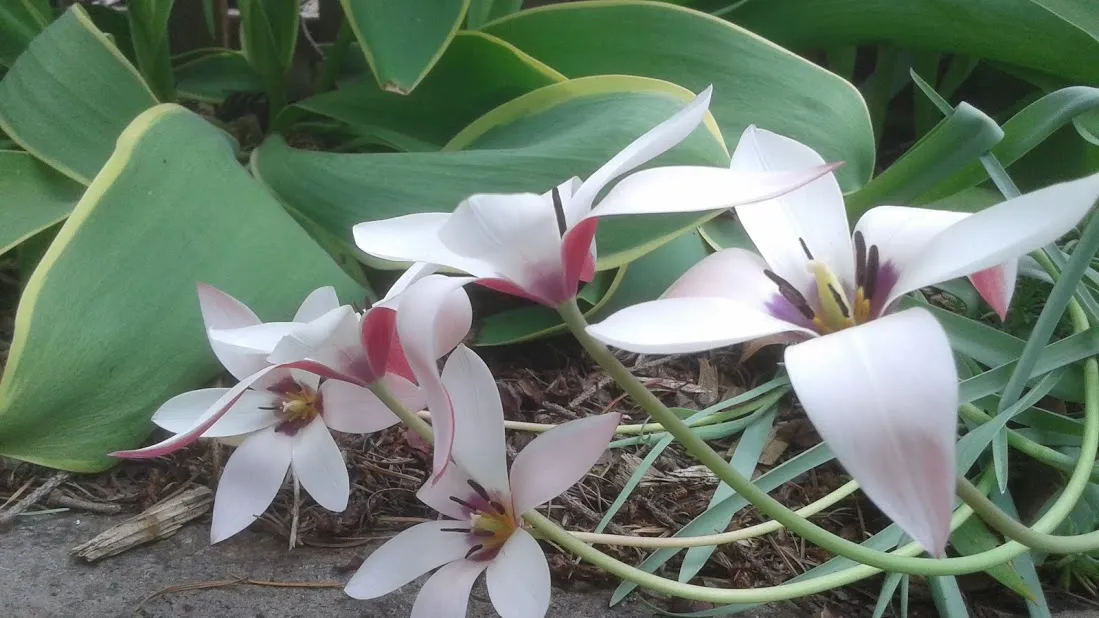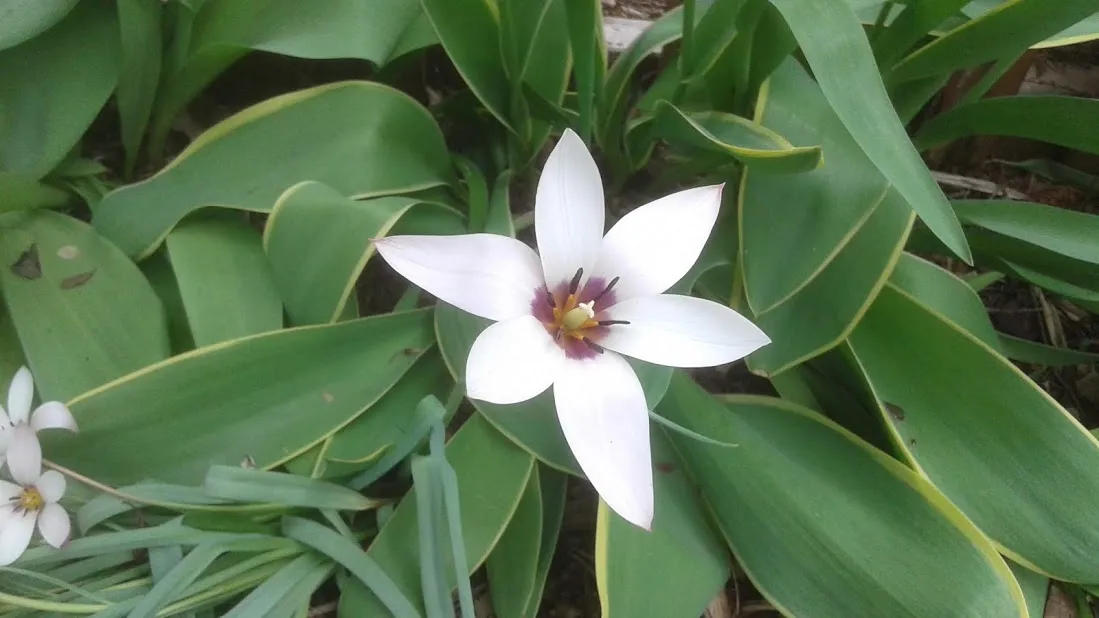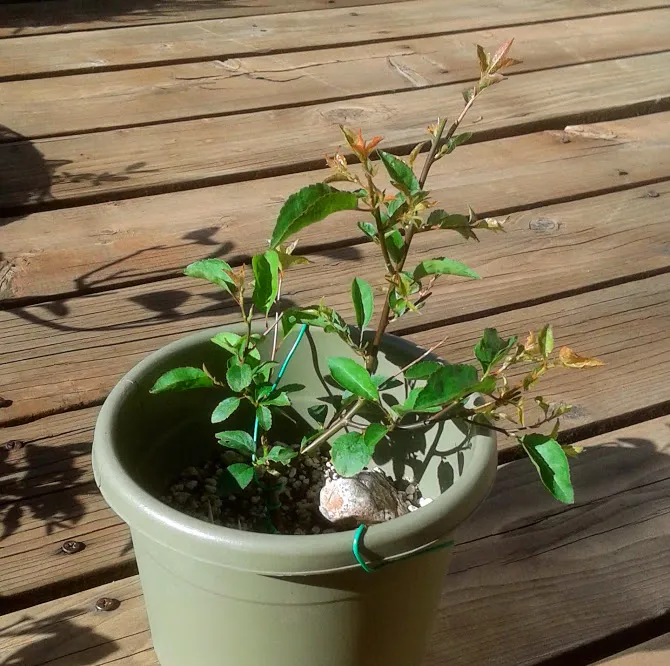
This is a cherry tree I've been training for bonsai.
In this article, I'm going to demonstrate some of the rapid changes in growth this tree has undergone this year, and a recent change in style I applied to it.
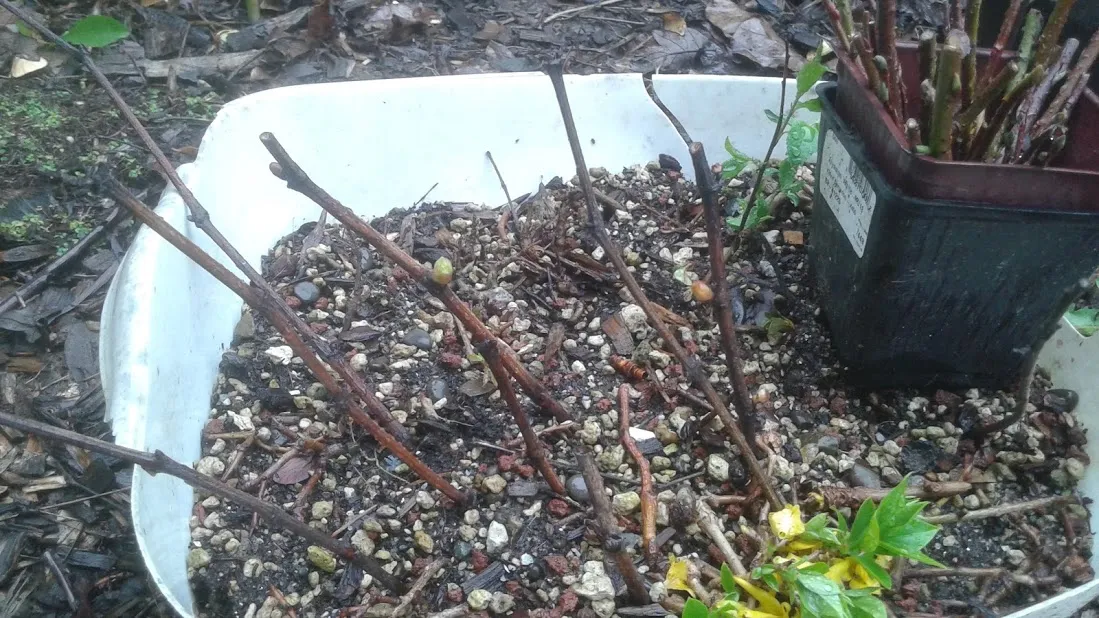
This past winter, this small cherry tree cutting survived the winter. In April it started to form its first leaves and roots. It is pictured in the back of the tub of sand here in this photo above.
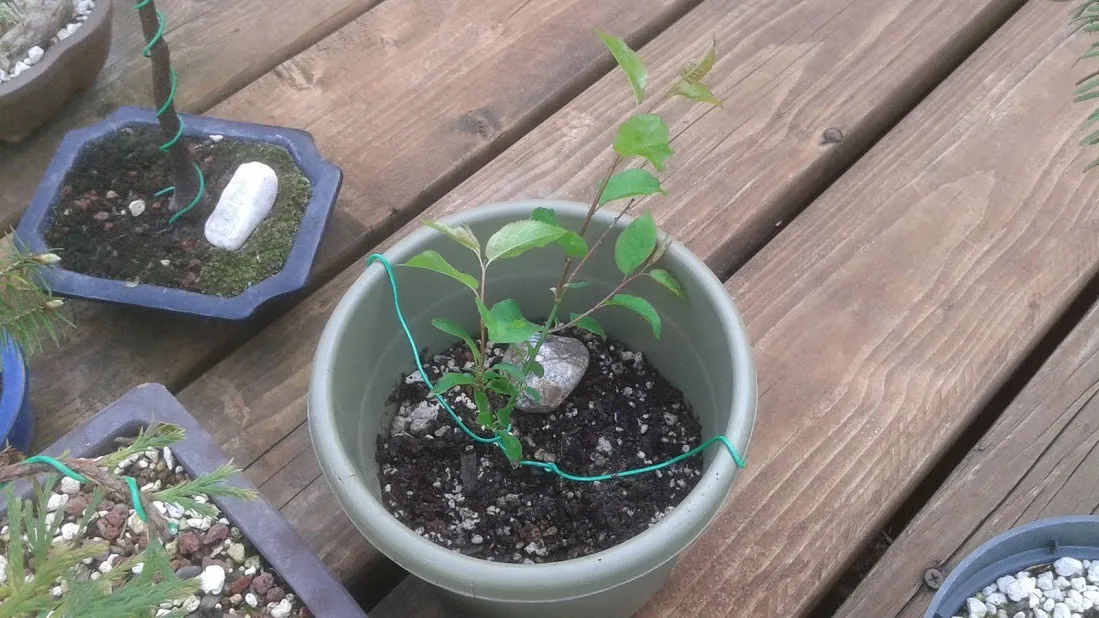
The weather warmed up that month, and we started getting lots of sunny days. I decided to take the rooted cutting and place it into this training pot.
Using some organic matter along with the inorganic rocky soil and sand, I kept the soil level low. The reason for this is to encourage side-spreading roots so the root-ball can begin to form the shallow shape of a future bonsai pot or dish. For now, it will have to make due with this cracked plastic pot. If it survives and performs well, I'll upgrade some day to a nicer bonsai pot.
Also, I figured the tall edges of the pot around the trunk may provide some extra shade and cooler air during the summer when the sun radiation is too harsh.
I have a theory about young trees, that they actually do better in a sheltered environment, mimicking how it would grow wild in nature. Most trees in nature drop a seed that falls to the ground of a forest. When the sapling grows, it often receives less light than the taller trees sheltering it, and it may spend several years living in a low-light condition as an under-story tree, unless it grows fast enough to extend taller and healthier than the parent trees above it is competing with for sunlight.
I know, it's a strange theory of mine, but I think in some cases giving a tree less sunlight will actually speed up the growth of the tree, and improve its health. A young tree alone on a sunny plot of ground might become an entitled lazy bum, and not bother to work hard to try to grow taller, instead focusing on gorging on chlorophyll to green up a few fattened leaves. A overly coddled tree might even suck out all the nutrients from the soil, leaving the overgrown roots and branches always starving to be fed an abundance of fertilizers. It lacks the routine exercise of a healthier tree that saves up reserves of energy over many months of careful rationing.
What do you think? Do you think a young tree needs to be trained like people, to learn to work hard and grow up, and not be smothered to become a lazy entitled stick-in-the-butt? Or do you think I am barking up the wrong tree with this analogous theory and these silly euphemisms?
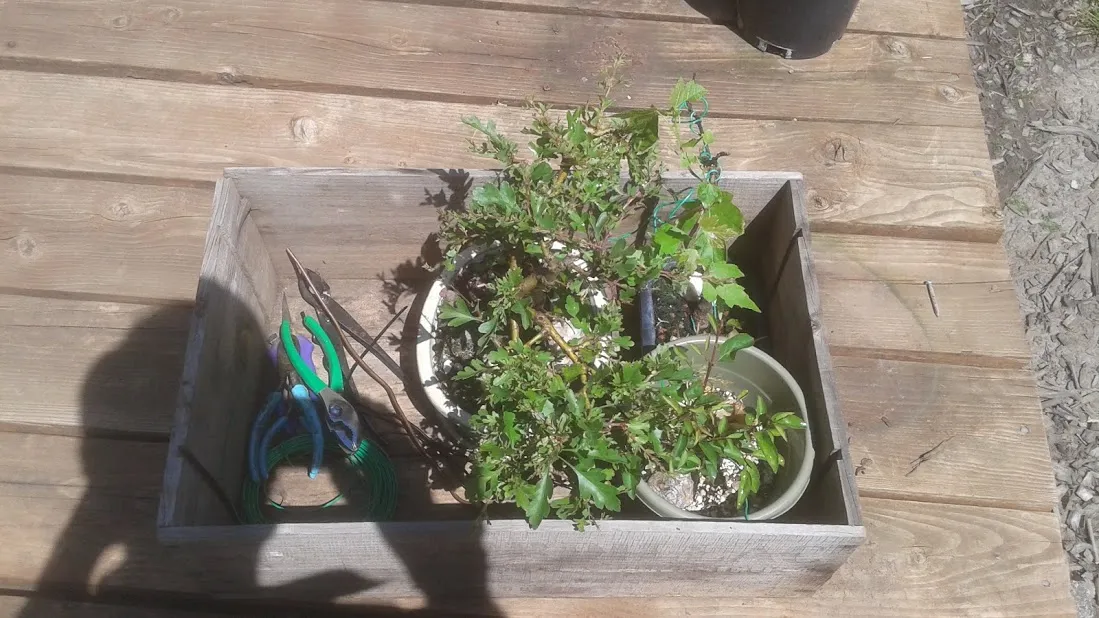
Now it's June, and I have been suffering a bit from the sun radiation myself. I got some sunburns from not wearing sunscreen in the mornings when I was out watering my plants and trees.
Today I gathered three of my bonsai trees to bring to our local bonsai club. I was relieved to have an indoor location to work on my trees today, away from the scalding sun.
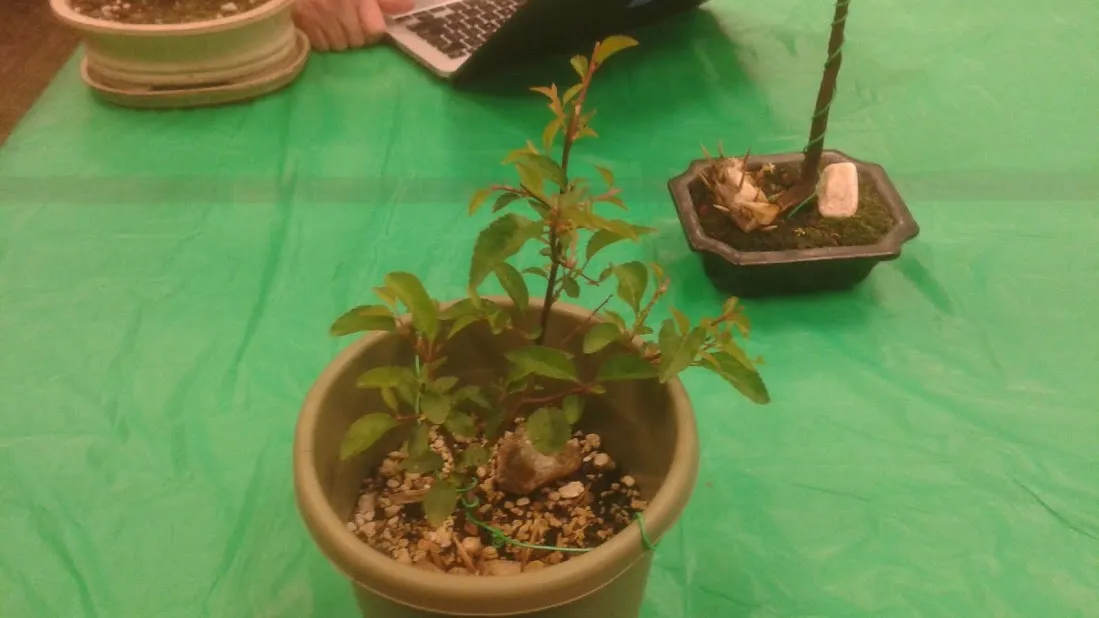
Above is what the cherry tree did look like today. I had already been pinching the stems several times on this tree to stimulate side bud growth.
It has a tendency to form strong leaders from the tips of the branches. Branches on the cherry tree tend to grow in straight lines. The stems are very lightweight and flexible at this stage.
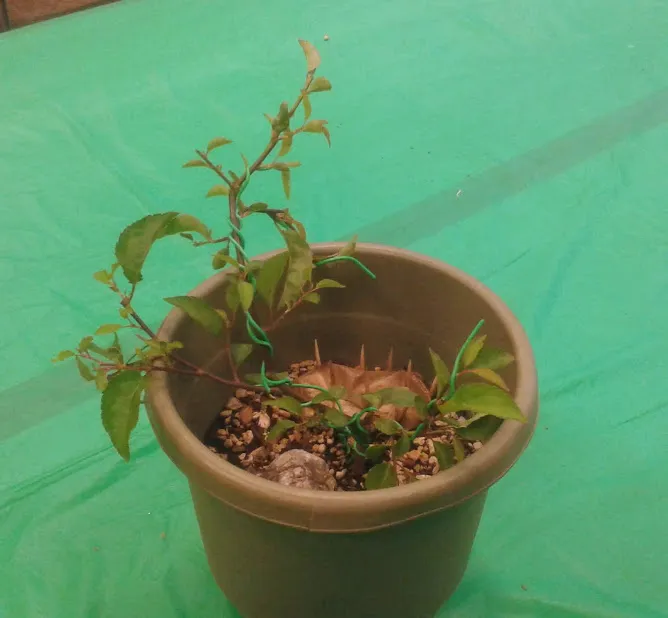
After preparing the tree by removing unnecessary large leaves and crowded stem regions, the tree was ready to be wired.
Most of the tree already has some interesting angles and bends, however a few branches I set my sights on with the wire. New curves are added to establish a more interesting profile from the front.
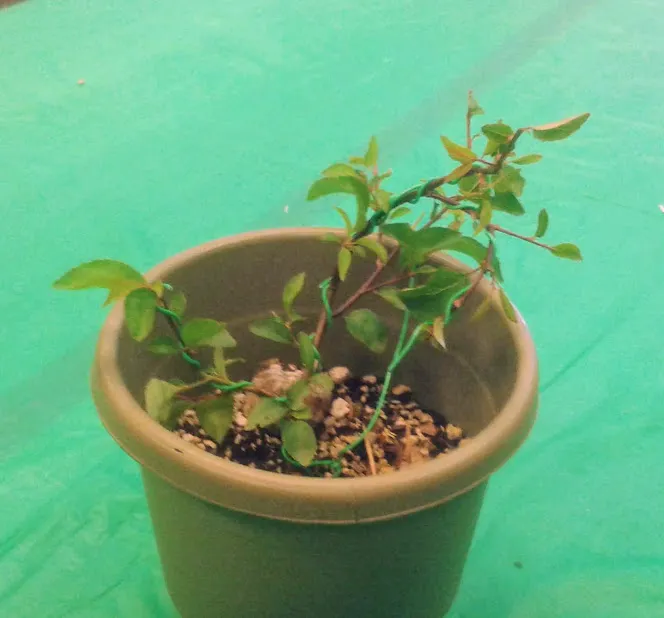
Here is the reverse view. I know it is hard to make out the new shape. Trust me, it's curvier than it was before. It's good to incorporate these new shapes to the tree when it is young, especially the trunk.

From above, the tree is given a fan shape, spiraling out randomly in three directions.
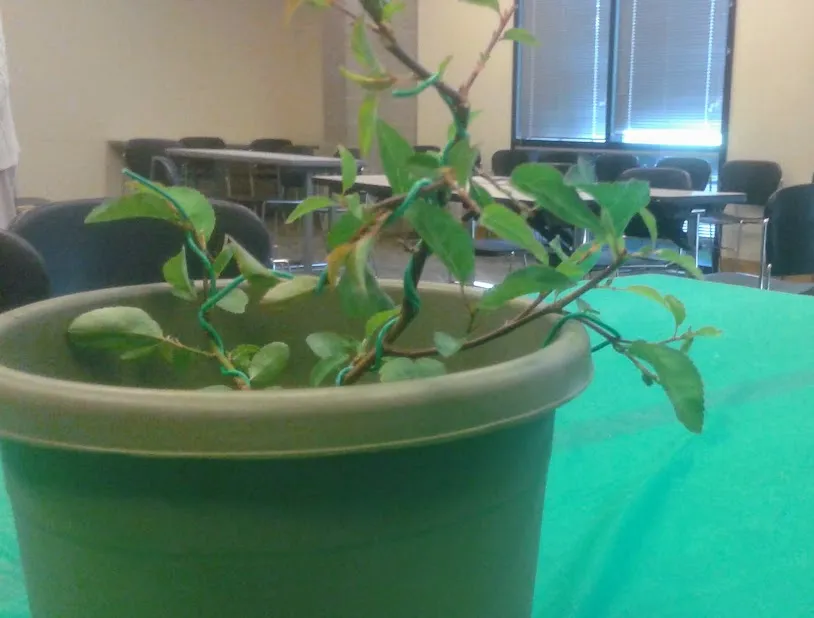
This rightward branch had three growth tips all heading upward in the same direction in parallel with the main branch. To add variety, I angled one of the side tips downward and then angle it back up.
Using the lip of the pot, I call this a fold-over technique. The pot edge becomes a form for the stem to curve over, with the wire gently snugging the stem down over the edge.
A slight lift of the wire end allows the stem to grow back upward, as if the bud of the branch is searching for the light.
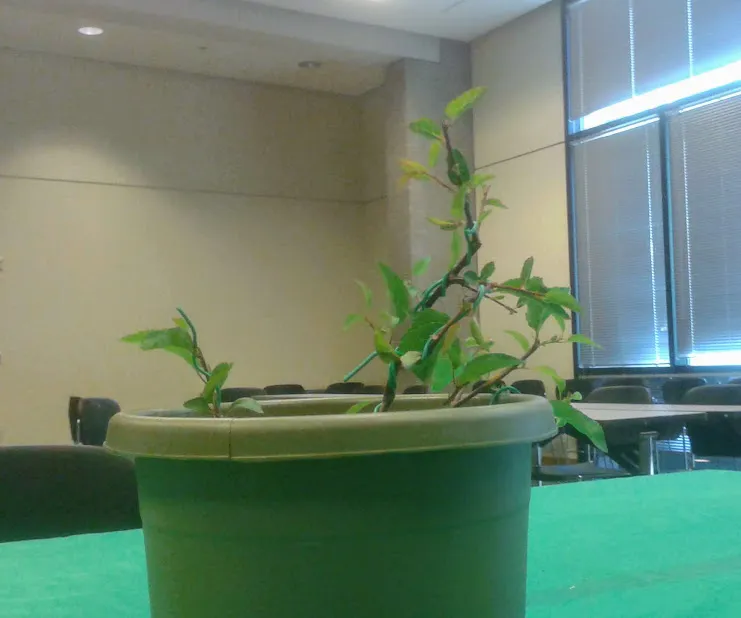
The trunk and soil line is concealed by the pot when looking at the true profile of the tree. I think this tree has the beginnings of a very stately, regal appearance.

Isn't it interesting to view ideas for concept designs that can be used for developing new bonsai trees?
All of the bonsai trees I am featuring this week are trees not commonly grown for bonsai, because they are better known as fruit trees. Cherry, apple, lime, lemon, goji berry, and grape. Although these trees are more commonly grown for fruit, they can also be miniaturized into bonsai to fashion handsome trees that will occupy far less space. Many years into maturity, even a bonsai tree is capable of forming flowers, and sometimes even fruit.
Photos in this post are all #originalworks by @creativetruth, unless stated otherwise.
Find me on discord and chat with other tree growers, bonsai enthusiasts, and gardeners. We have quite a few accredited experts filling out our ranks, and a helpful Spanish-speaking community.
